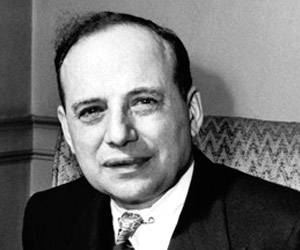Dear Friends
In the two articles, we looked at investing from a business perspective and circle of competence. In this article, we will delve into another topic called “Mr Market”.
When we do value investing, we want to buy businesses that are selling for 50 cents when the actual worth is a dollar. How is this possible? Who is in the right mind would sell something worth a dollar at 50 cents? Is there a special trick to this? Before we tackle this predicament, I will introduce Mr. Market to you. He’s a very affable chap.
Mr. Market was first introduced to the world by Benjamin Graham, the father of value investing.

The following quote sums up his philosophy:
“Imagine you had a partner in a private business named Mr. Market. Mr. Market, the obliging fellow that he is, shows up daily to tell you what he thinks your interest in the business is worth. On most days, the price he quotes is reasonable and justified by the business’s prospects. However, Mr. Market suffers from some rather incurable emotional problems; you see, he is very temperamental. When Mr. Market is overcome by boundless optimism or bottomless pessimism, he will quote you a price that seems to you a little short of silly. As an intelligent investor, you should not fall under Mr. Market’s influence, but rather you should learn to take advantage of him. The value of your interest should be determined by rationally appraising the business’s prospects, and you can happily sell when Mr. Market quotes you a ridiculously high price and buy when he quotes you an absurdly low price. The best part of your association with Mr. Market is that he does not care how many times you take advantage of him. No matter how many times you saddle him with losses or rob him of gains, he will arrive the next day ready to do business with you again.”
The stock market exists to serve us and not to guide our decision. Value investing involves patience and lots of it. We have to be patient to wait for the stock price to come below our estimate of intrinsic value. Back to the question on how it is possible for the stock price to come below the value of the business. This phenomenon happens quite a couple of times – all due to the tantrums thrown by Mr. Market. It can happen during a market crash, during a slight correction of the market or during a temporary one-time solvable problem.
Statistically, a stock market crash happens once around every five years as seen from The National Bureau of Economic Research website. If there is a stock market crash, a recession usually follows as the market is usually a leading indicator of the economy. During such a time, a great opportunity is presented to grab businesses at bargain prices. It is like the “Great Singapore Sale” for stocks!
Wonderful businesses like Vicom, Raffles Medical Group and Boustead were selling way below their intrinsic values during the 2008/2009 Great Financial Crisis. If you had bought shares in those companies then, you could have made a considerable sum of money!

Do not worry though if you missed the boat. Mark Twain once said that “History doesn’t repeat itself, but it does rhyme.” The economy works in cycles and opportunities will surely be presented in the future.
Another way opportunities are presented is when an outstanding business is affected by a temporary one-time solvable problem. Warren Buffett once quipped, “A great investment opportunity occurs when a marvellous business encounters a one-time huge, but solvable, problem.”

Even one of Warren Bufffet’s greatest investments came amid a one-time solvable problem. In 1963, a “salad oil” scandal occurred when American Express found that $60 million lent against collateral were mostly sea water instead of salad oil. The borrower was bankrupt and American Express had to take a loss of $60 million.
Buffett analysed the situation and found that the trust in American Express travellers’ check and charge cards were unaffected. The company’s intrinsic value was also higher than the share price then. He saw virtually no downside and maximum upside. He invested 40% of the net worth of the Buffett Partnership, or roughly $13 million. Buffett bought 5% of American Express stock, which had collapsed to $35 a share from a high of more than $62. In the following two years, the stock price of American Express tripled and the Buffett Partnership reportedly sold out with a $20 million profit.
In summary, we should invest when Mr Market throws up a huge opportunity for us. This occurs during a market crash, a slight correction of the market or a temporary one-time solvable problem of a company. Be greedy when others are fearful!
To know more about Value Investing …….
Click HERE and join me for a Free Investing Workshop.
Cheers!
Sudhan, Business Analyst
Mind Kinesis Value Investing Academy

